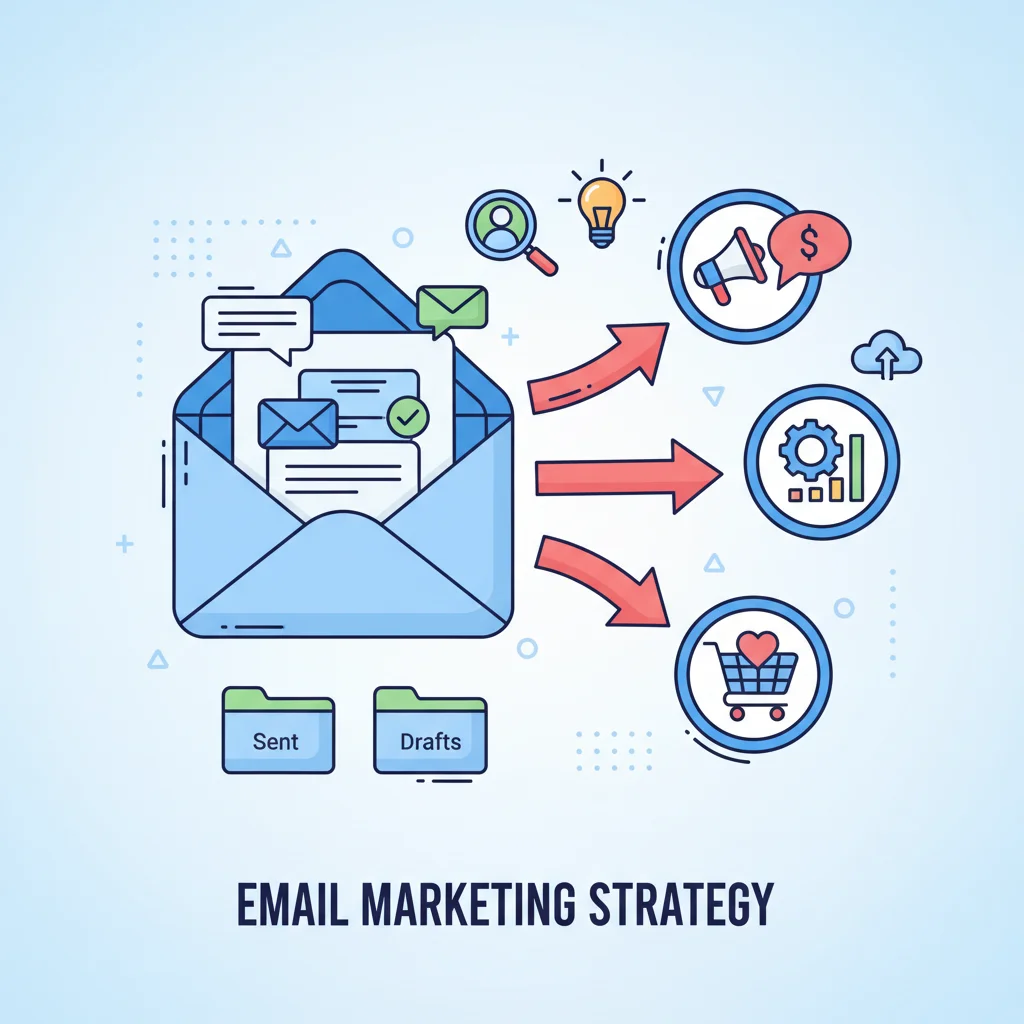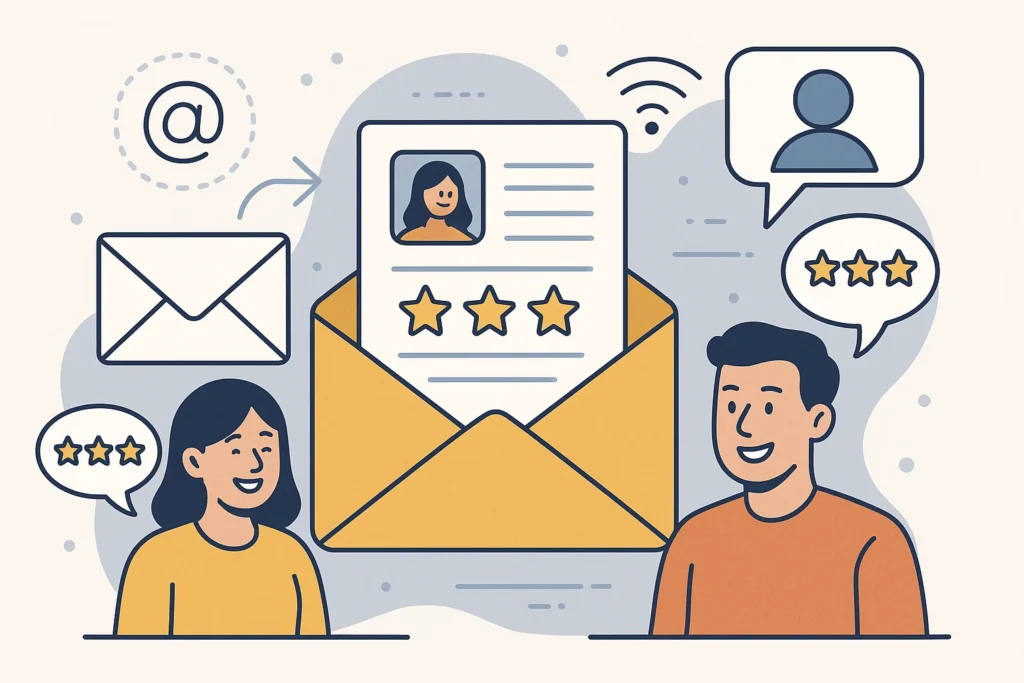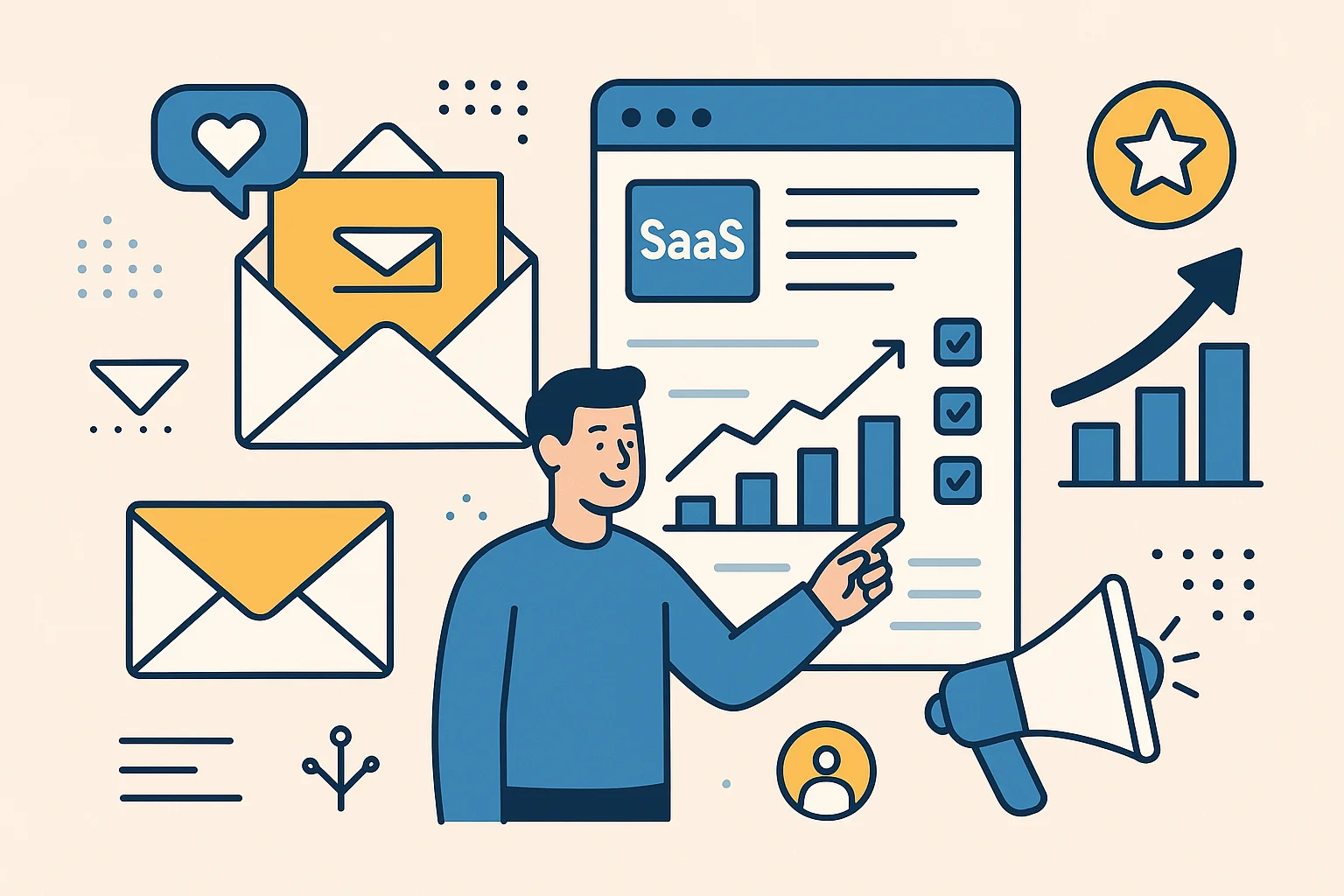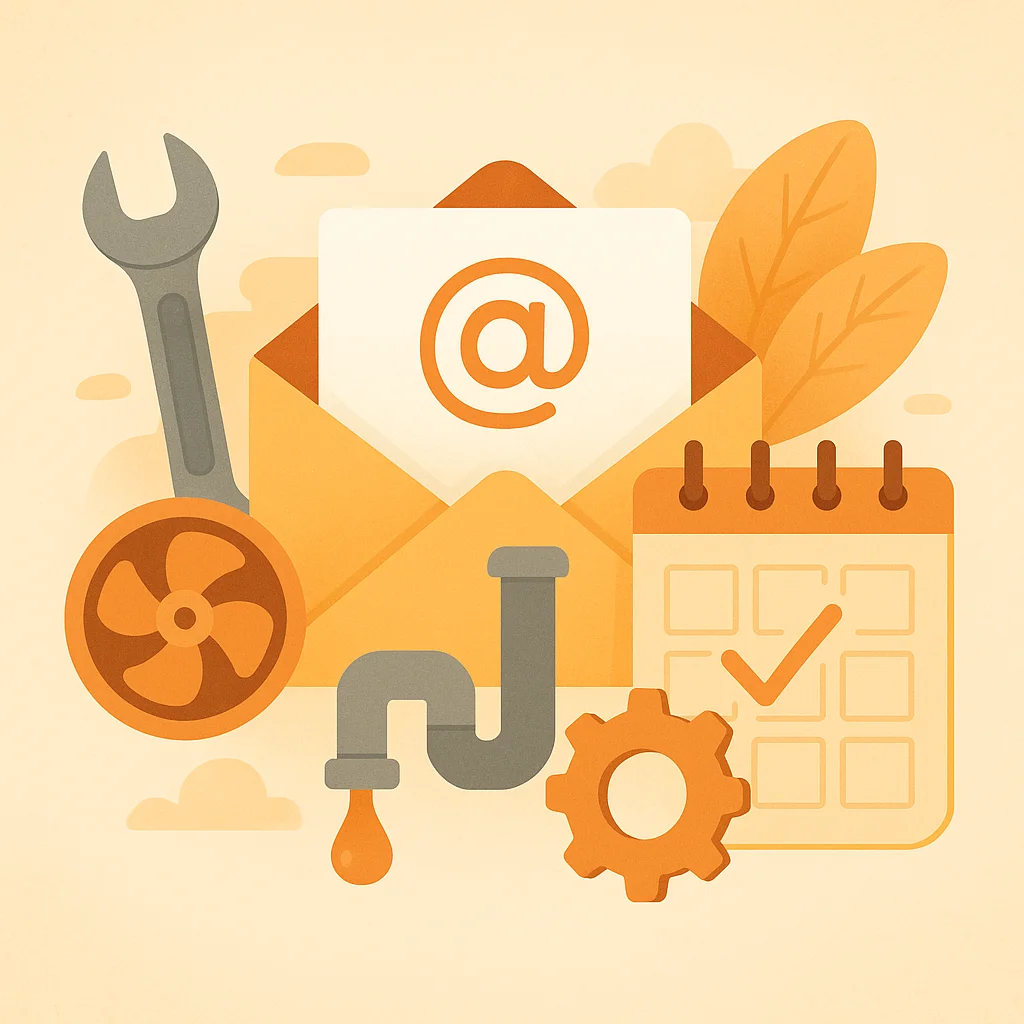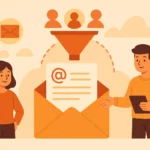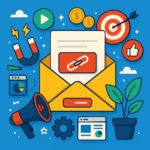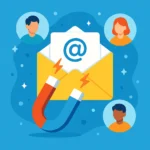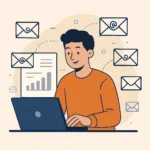Now Reading: Email Marketing For Content Distribution Success Guide
-
01
Email Marketing For Content Distribution Success Guide
Email Marketing For Content Distribution Success Guide
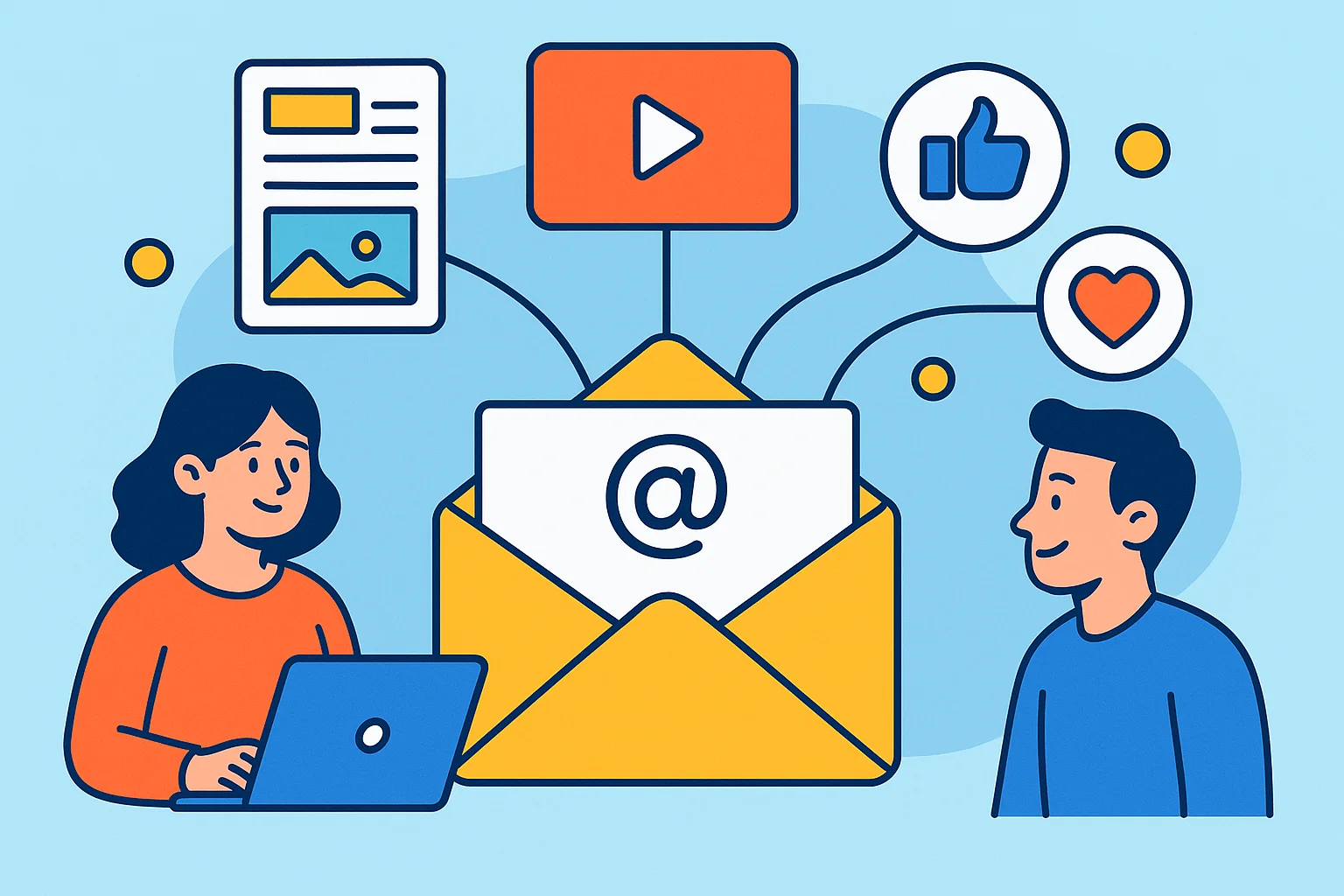
Here’s a number that’ll make you rethink your content strategy: email marketing delivers an average ROI of $44 for every dollar spent. While you’re fighting algorithms on social media, your email subscribers are sitting in their inboxes, waiting for your content. Email marketing for content distribution isn’t just effective – it’s the most reliable way to ensure your content actually reaches the people who matter most.
Key Takeaways
Email marketing for content distribution works by sending your best content directly to subscribers who’ve already shown interest in your brand. Instead of hoping your content gets seen on social media, you’re delivering it straight to inboxes where people actually check for updates.
Here’s how to use email marketing for effective content distribution:
- Segment your audience based on interests, behavior, and demographics to send relevant content to the right people
- Create automated drip campaigns that deliver content series over time, nurturing leads without manual work
- Use compelling subject lines that grab attention and encourage opens
- Personalize content beyond just using names – tailor recommendations based on past engagement
- Mix content types including blog posts, guides, videos, and exclusive resources
- Optimize for mobile since most people check email on their phones
- Track performance metrics like open rates, click-through rates, and conversions to improve results
Building Your Email Content Distribution Foundation
Let’s start with the basics. Email marketing for content distribution isn’t about blasting random updates to everyone on your list. It’s about creating a strategic system that delivers the right content to the right people at exactly the right moment.
Think of your email list as your VIP section. These are people who’ve raised their hands and said, “Yes, I want to hear from you.” Unlike social media followers who might see your post (or might not, thanks to algorithms), email subscribers have given you permission to show up in their personal space.
Understanding Your Audience Segments
Before you send a single email, you need to know who you’re talking to. Audience segmentation is like organizing your friends into different groups – you wouldn’t talk to your college buddies the same way you talk to your work colleagues, right?
Start by dividing your list based on:
- Content preferences: What topics do they engage with most?
- Buyer’s journey stage: Are they just discovering your brand or ready to purchase?
- Behavioral data: Which pages do they visit? What do they download?
- Demographics: Location, job role, company size, industry
I like to think of segmentation as creating different “channels” for your content. Your marketing managers might get in-depth strategy guides, while your CEOs receive high-level industry insights. Same valuable content, different angles.
Setting Clear Distribution Goals
You can’t hit a target you can’t see. Your email content distribution strategy needs specific, measurable goals that tie back to your business objectives.
Here are some solid goals to consider:
- Drive website traffic by sharing blog posts, case studies, and resources
- Increase content downloads for lead magnets, whitepapers, and templates
- Nurture leads through educational content that builds trust and authority
- Boost engagement with interactive content like polls, surveys, and quizzes
- Generate sales by promoting relevant products or services alongside valuable content
Pick 2-3 primary goals and build your strategy around them. Trying to accomplish everything at once usually means accomplishing nothing particularly well.
Useful Articles:
Creating Compelling Email Content
Now for the fun part – actually creating emails that people want to open, read, and act on. Content curation and creation for email requires a different approach than other channels.
Crafting Subject Lines That Get Opened
Your subject line is like the headline of a newspaper – it determines whether people dive in or keep scrolling. Compelling subject lines for content distribution should create curiosity without being clickbait-y.
Here are some formulas that work:
- Benefit-focused: “5 ways to double your content reach”
- Curiosity-driven: “The content strategy mistake everyone’s making”
- Urgency-based: “Last chance to grab this free template”
- Personal: “Sarah, this reminded me of our conversation”
- Question-based: “Struggling with content distribution?”
Avoid spam trigger words like “FREE!!!” or “URGENT!!!” – they’ll land you in the junk folder faster than you can say “unsubscribe.”
Structuring Your Content Emails
The best email templates for content distribution follow a simple structure that guides readers from interest to action:
Subject: [Compelling hook that creates curiosity]
Hi [First Name],
[Personal opening that connects to their interests]
[Brief introduction to the content you're sharing]
[Main content section with clear value]
- Key point 1
- Key point 2
- Key point 3
[Clear call-to-action]
[Friendly sign-off]
[Your name]
P.S. [Additional value or reminder]Here’s a real example:
Subject: The content distribution hack nobody talks about
Hi Jessica,
I noticed you downloaded our content strategy guide last week, so I thought you'd love this insider tip.
Most marketers focus on creating more content, but the real game-changer is getting your existing content in front of more eyeballs.
Here's what I've learned works best:
- Repurpose one blog post into 5 different email formats
- Use behavioral triggers to send relevant content automatically
- Create content series that keep people coming back for more
Want the full playbook? I've put together a step-by-step guide that shows exactly how to set this up.
[Get the Content Distribution Playbook]
Talk soon,
Alex
P.S. This strategy helped one of my clients increase their email click-through rates by 340%. Pretty cool, right?Personalizing Beyond the Basics
Personalization in email marketing goes way beyond slapping someone’s first name in the subject line. Real personalization means delivering content that feels like it was created specifically for each subscriber.
Dynamic content blocks let you show different content to different segments within the same email. For example:
- Marketing managers see marketing-focused tips
- Sales reps see sales-related content
- CEOs see high-level strategic insights
Behavioral triggers automatically send relevant content based on actions people take:
- Someone reads a blog post about SEO? Send them your advanced SEO guide.
- A subscriber watches a webinar? Follow up with related case studies.
- Someone hasn’t opened emails in a while? Send a “we miss you” message with your best content.
Email Campaign Types for Content Distribution
Different types of email campaigns serve different purposes in your content distribution strategy. Let’s break down the most effective ones:
Newsletter Campaigns
Email newsletters are your regular touchpoint with subscribers. They’re perfect for sharing multiple pieces of content, updates, and building ongoing relationships.
A good newsletter structure includes:
- Featured content: Your best piece from the week/month
- Content roundup: 3-4 additional resources
- Community spotlight: User-generated content or testimonials
- Quick tip: One actionable insight
- What’s coming: Teaser for next week’s content
Automated Drip Campaigns
Drip campaigns are like having a personal assistant who never forgets to follow up. They automatically deliver content series based on triggers like sign-ups, downloads, or specific behaviors.
Here’s a simple welcome series structure:
Email 1 (Immediate): Welcome + deliver promised content
Email 2 (Day 3): Your most popular blog post
Email 3 (Day 7): Case study or success story
Email 4 (Day 14): Exclusive resource or tool
Email 5 (Day 21): Community invitation or next stepPromotional Content Emails
These aren’t just sales pitches – they’re strategic content pieces that happen to include promotional elements. The key is leading with value, not the sale.
For example, instead of “Buy our course,” try:
“I’ve been getting tons of questions about content strategy, so I put together this free 20-minute training that covers the exact framework I use with my clients. Oh, and if you want to dive deeper, I’m opening up a few spots in my content mastery program next week.”
Useful Articles:
Advanced Email Distribution Tactics
Once you’ve got the basics down, these advanced tactics will take your content distribution to the next level.
AI-Powered Content Recommendations
AI tools can analyze subscriber behavior and automatically suggest the most relevant content for each person. This is like having a personal librarian who knows exactly what each person wants to read.
Some platforms use machine learning to:
- Predict which content each subscriber is most likely to engage with
- Optimize send times for individual subscribers
- Automatically adjust content recommendations based on engagement patterns
Interactive Email Experiences
Static emails are fine, but interactive emails create memorable experiences that boost engagement. Try adding:
- Polls and surveys to gather feedback and preferences
- Quizzes that guide subscribers to relevant content
- Accordion menus that let people choose what they want to read
- Hover effects that reveal additional information
Multi-Channel Integration
Your email marketing works best when it’s connected to your other distribution channels. Here’s how to create a cohesive experience:
- Social media sync: Tease email content on social platforms
- Website integration: Use email sign-up forms on high-traffic pages
- SMS coordination: Send text reminders for important email content
- Retargeting ads: Show ads to people who engaged with your emails
Optimizing Email Performance
Email optimization is an ongoing process of testing, measuring, and improving your content distribution efforts.
A/B Testing Your Content
A/B testing helps you make data-driven decisions instead of guessing what works. Test one element at a time:
- Subject lines: Try different approaches (curiosity vs. benefit vs. urgency)
- Send times: Test morning vs. afternoon vs. evening
- Content length: Short and punchy vs. detailed and comprehensive
- Call-to-action placement: Top vs. middle vs. bottom of email
- Personalization level: Generic vs. highly personalized
Mobile Optimization
With most people checking email on their phones, mobile optimization isn’t optional – it’s essential.
Mobile-friendly emails should have:
- Single-column layouts that stack nicely on small screens
- Large, tappable buttons (at least 44px high)
- Readable font sizes (at least 14px)
- Compressed images that load quickly
- Short subject lines that don’t get cut off
Deliverability Best Practices
The best content in the world doesn’t matter if it never reaches the inbox. Email deliverability depends on several factors:
- List hygiene: Regularly remove inactive subscribers
- Authentication: Set up SPF, DKIM, and DMARC records
- Engagement rates: High open and click rates signal quality content
- Spam compliance: Follow CAN-SPAM and GDPR guidelines
- Sender reputation: Maintain consistent sending patterns
Useful Articles:
Content Types That Work Best in Email
Not all content translates well to email. Here are the content types that consistently perform well in email distribution:
Educational Content
How-to guides, tutorials, and educational resources are email gold. People love learning new skills, and email is perfect for delivering step-by-step instructions.
Popular educational content includes:
- Step-by-step tutorials with screenshots
- Checklists and templates they can download and use
- Industry insights and trend analysis
- Tool reviews and comparisons
- Best practices from your experience
Curated Content Roundups
Content curation saves your subscribers time by filtering through the noise and sharing only the best resources. This positions you as a trusted filter in a noisy world.
Effective roundups include:
- 3-5 high-quality articles from different sources
- Your commentary on why each piece is valuable
- Key takeaways for busy readers
- Action items they can implement immediately
Exclusive Content
Exclusive content makes subscribers feel special and gives them a reason to stay on your list. This could be:
- Behind-the-scenes content from your business
- Early access to new blog posts or resources
- Subscriber-only tips and strategies
- Personal stories and lessons learned
- Sneak peeks of upcoming products or content
Building Long-Term Relationships Through Email
Relationship building through email is about consistency, value, and genuine connection. It’s not just about distributing content – it’s about creating a community.
Consistency in Communication
Consistent communication builds trust and expectation. Your subscribers should know when to expect your emails and what kind of value they’ll get.
Establish a sending schedule that you can maintain:
- Weekly newsletters for regular touchpoints
- Bi-weekly deep dives for more comprehensive content
- Monthly roundups for busy audiences
- Triggered emails for timely, relevant content
Creating Community Through Content
Use your emails to build a sense of community among your subscribers:
- Share subscriber stories and successes
- Ask questions and encourage replies
- Create discussions around your content topics
- Highlight community members who are doing great work
- Invite feedback on your content and strategy
Evolving Your Strategy
Your email content distribution strategy should evolve as your audience grows and changes. Regularly review:
- Engagement metrics to see what content resonates
- Subscriber feedback through surveys and replies
- Industry trends that might affect your audience
- New tools and tactics that could improve your results
- Business goals that might shift your content focus
The most successful email marketers treat their strategy as a living document that grows and improves over time.
Email marketing for content distribution transforms scattered content into a strategic asset that builds relationships, drives traffic, and grows your business. Start with solid segmentation, create valuable content, and always focus on serving your subscribers first – the results will follow naturally.


